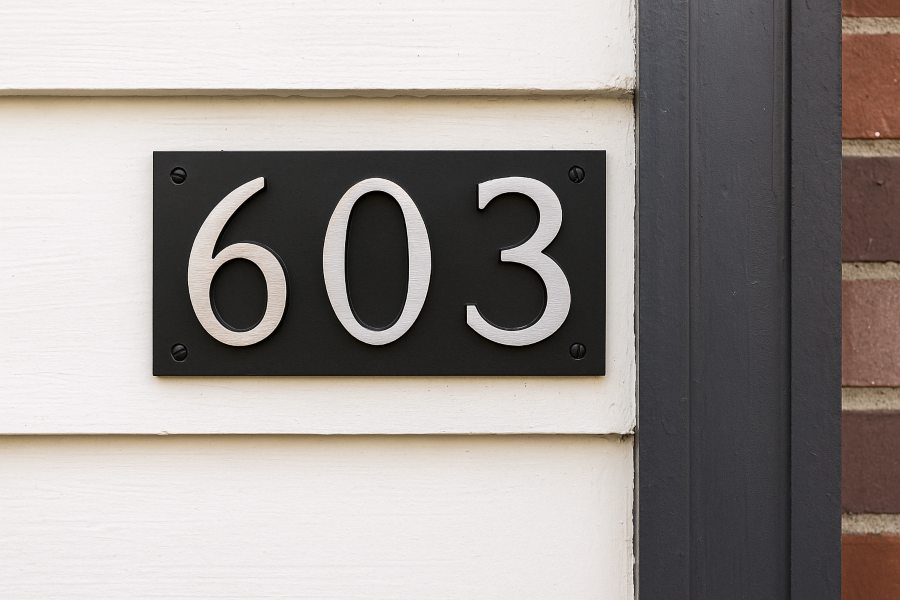
When you drive through a neighborhood, you might notice house numbers displayed on mailboxes, front doors, or curbs. These numbers help identify homes, but are they legally required? The answer varies depending on where you live, as house number regulations are typically set by local governments rather than federal law. This comprehensive guide explores whether house numbers are required by law, why they matter, and how to ensure compliance with local rules. We’ll also dive into the practical and legal implications, best practices, and frequently asked questions about house numbers.
Why House Numbers Matter
House numbers serve as more than just a way to identify your home. They play a critical role in public safety, logistics, and community organization. Here’s why they are so important:
Public Safety and Emergency Services
Imagine an ambulance or fire truck racing to an emergency but struggling to find the right house because the address isn’t clearly marked. House numbers ensure that first responders, such as police, firefighters, and paramedics, can quickly locate a property. According to the National Fire Protection Association (NFPA), clear and visible house numbers can save precious minutes during emergencies, potentially saving lives.
Mail and Package Delivery
Clear house numbers are essential for postal services and delivery companies like UPS, FedEx, and Amazon. Without visible numbers, drivers may deliver packages to the wrong address or face delays, leading to frustration for both residents and delivery personnel.
Navigation and Visitor Convenience
House numbers make it easier for visitors, contractors, or rideshare drivers to find your home. In the age of GPS and navigation apps, a clearly displayed house number ensures that technology can guide people accurately to your doorstep.
Are House Numbers Required by Law?
The short answer is: it depends. In the United States, there is no federal law mandating house numbers, but many local governments, municipalities, and counties have ordinances requiring them. These regulations are often enforced to ensure public safety and efficient delivery of services. Let’s break it down by jurisdiction and context.
Local Ordinances on House Numbers
Most cities and counties in the U.S. have building codes or municipal ordinances that require house numbers to be displayed on residential and commercial properties. These rules typically specify:
- Visibility: Numbers must be visible from the street, even at night.
- Size: Numbers should be a minimum size (often 4-6 inches tall) for legibility.
- Placement: Numbers are usually required on the front of the house, mailbox, or curb.
- Contrast: Numbers must contrast with their background (e.g., dark numbers on a light surface).
- Material: Some areas require reflective or illuminated numbers for nighttime visibility.
For example, in Los Angeles, California, the municipal code (Section 63.115) mandates that all buildings have address numbers at least 4 inches tall, clearly visible from the street. Similarly, Chicago’s building code requires numbers to be displayed on the front of buildings and visible at night.
To find out the specific requirements in your area, check with your local government’s building or planning department. You can often find this information on your city or county’s official website.
Homeowners’ Associations (HOAs)
If you live in a community governed by a homeowners’ association (HOA), you may face additional requirements for house numbers. HOAs often have strict guidelines about the style, size, and placement of numbers to maintain a uniform aesthetic. Failure to comply with these rules could result in fines or other penalties.
Rural Areas vs. Urban Areas
In rural areas, house number regulations may be less strict, but they are still critical. Rural properties often have longer driveways or are set far back from the road, making visibility a challenge. Some counties require reflective signs at the end of driveways to ensure emergency services can locate homes. Urban areas, on the other hand, typically have more detailed and strictly enforced rules due to higher population density.
International Regulations
House number requirements aren’t limited to the U.S. Many countries have similar regulations, often tied to postal services or urban planning. For instance:
- In the United Kingdom, the Street Naming and Numbering (SNN) system is managed by local councils, which assign and regulate house numbers to ensure consistency.
- In Canada, municipalities like Toronto require house numbers to be at least 10 cm (about 4 inches) tall and visible from the street.
- In Australia, local councils enforce numbering to support emergency services and mail delivery.
If you live outside the U.S., check with your local government or postal service for specific requirements.
Consequences of Not Displaying House Numbers
Failing to display house numbers can lead to various issues, both practical and legal. Here are some potential consequences:
Fines and Penalties
In areas where house numbers are required by law, non-compliance can result in fines. For example, some municipalities issue citations ranging from $50 to $500 for failing to display proper house numbers. Repeated violations may lead to higher fines or additional penalties.
Delays in Emergency Response
As mentioned earlier, unclear or missing house numbers can delay emergency services. In a worst-case scenario, this could have life-threatening consequences. Some jurisdictions cite this as a primary reason for enforcing house number regulations.
Delivery Issues
Without visible house numbers, you may experience delayed or misdelivered mail and packages. This can be particularly frustrating during peak shopping seasons, such as the holidays.
How to Comply with House Number Regulations
To avoid fines and ensure your home is easily identifiable, follow these steps to comply with house number regulations:
Check Local Laws
Start by researching your local ordinances. Visit your city or county’s website or contact the building department to understand the specific requirements for house numbers in your area. Some municipalities provide detailed guides or checklists for compliance.
Choose the Right Numbers
When selecting house numbers, consider the following:
- Size: Most regulations require numbers to be at least 4-6 inches tall. Larger numbers may be necessary for homes set far back from the street.
- Material: Opt for durable, weather-resistant materials like metal, ceramic, or high-quality plastic.
- Reflectivity: Reflective or illuminated numbers are ideal for nighttime visibility.
- Contrast: Choose numbers that stand out against the background (e.g., black numbers on a white house).
Placement Tips
Proper placement is key to ensuring your house numbers are visible:
- Front of the House: Place numbers on the front door, above the garage, or on the facade of the house.
- Mailbox or Curb: If your home is set back from the road, consider adding numbers to your mailbox or painting them on the curb.
- Driveway Signs: In rural areas, a reflective sign at the end of your driveway can help first responders find your home.
Maintain Your Numbers
Over time, house numbers can fade, peel, or become obscured by vegetation. Regularly inspect your numbers to ensure they remain legible and comply with local regulations. Trim any bushes or trees that might block visibility.
Creative Ways to Display House Numbers
While compliance with local laws is essential, you can also get creative with your house numbers to enhance your home’s curb appeal. Here are some ideas:
Modern and Minimalist Designs
Sleek, stainless steel numbers or laser-cut acrylic numbers can give your home a contemporary look. These are especially popular in urban areas or homes with modern architecture.
Rustic and Handcrafted Options
For a cozy, rustic vibe, consider wooden numbers or signs with hand-painted lettering. These work well for cottages or homes in rural settings.
Illuminated Numbers
Solar-powered or LED-illuminated house numbers are both functional and stylish. They ensure visibility at night while adding a touch of sophistication.
Custom Signs
Personalized signs with your house number and family name can make your home stand out. Just ensure the numbers meet size and visibility requirements.
Common Questions About House Numbers
Are House Numbers Required for New Construction?
Yes, most building codes require house numbers to be displayed before a new home can pass inspection. Check with your local building department to confirm the requirements for new construction in your area.
Can I Use Roman Numerals for House Numbers?
While Roman numerals may look elegant, most local ordinances require Arabic numerals (0-9) for clarity. Roman numerals can be harder to read, especially for emergency responders or delivery drivers.
What If I Live in an Apartment Building?
In apartment complexes, the building itself typically has a street number, and individual units are identified by apartment numbers. Check with your property manager to ensure the building complies with local regulations.
Do House Numbers Need to Be Illuminated?
Some municipalities require illuminated or reflective numbers for nighttime visibility, especially in rural areas. Even if it’s not required, adding lighting or reflective numbers is a good idea for safety.
Conclusion
House numbers may seem like a small detail, but they play a vital role in public safety, mail delivery, and navigation. While there’s no universal law requiring house numbers in the U.S., most local governments have ordinances mandating their display, with specific rules about size, placement, and visibility. Failing to comply can result in fines, delayed emergency services, or delivery issues. By understanding your local regulations and choosing clear, visible house numbers, you can ensure compliance while enhancing your home’s functionality and curb appeal.
If you’re unsure about the rules in your area, contact your local government or building department for guidance. Displaying proper house numbers isn’t just about following the law—it’s about keeping your home safe and accessible for everyone who needs to find it.







